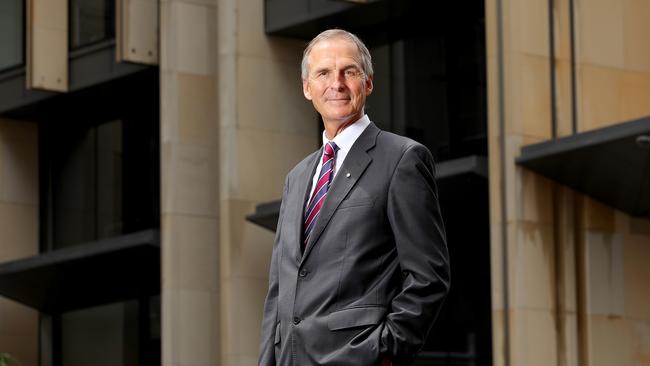How the flu shot could save 500 lives and $530 million
A new report has revealed the flu costs NSW an enormous $530 million in related costs every year – including eight million lost work hours and more than 7,000 flu-related hospitalisations.
NSW
Don't miss out on the headlines from NSW. Followed categories will be added to My News.
Exclusive: With cases of the flu surging across NSW, a new report has found that increasing vaccination rates could save 500 lives and at least $530 million annually across the state.
So far this year, more than 63,390 people in NSW have had the flu – a jump of 20,000 cases on the same period last year – but despite the rapid rise in cases just 15 per cent of people in the 15 to 50 year age group have received a flu jab so far this year.
A new report by the NSW Productivity Commission found the flu costs the state an enormous $530 million in related costs every year – comprising up to eight million lost work hours, more than 7,000 flu-related hospitalisations and almost 120,000 flu-related GP consultations each year.
Each time someone catches the flu, the report estimates three to six workdays are missed – amounting to around $940 to $1,900 worth of lost work time.

But that could all be significantly reduced if more “healthy” people below 65 are vaccinated, according to NSW Productivity and Equality Commissioner Peter Achterstraat.
“An additional two million vaccinations of people under 65 could give us a chance to achieve herd immunity against the flu and deliver an economic benefit of at least $260 for each extra vaccinated person,” he said.
“The savings and economic benefits outweigh the cost of delivering more vaccinations,
which is estimated to be around $42 per person when administered in a mass-vaccination
setting.”
While flu vaccines are currently targeted toward kids under five, the elderly and pregnant women, Mr Achterstraat said shifting the focus to people between 15 and 65 would provide greater protection to vulnerable people.
“People say they don’t want to get vaccinated because they don’t care if they get the flu,” he said.

“But you’re not doing it for yourself, you’re doing it for your work mates, vulnerable people.”
While an additional two million needles in arms sounds like a huge task, the Productivity Commission suggested mass flu vaccination programs in schools and encouraged workplaces to implement their own programs.
“People are concerned with the inconvenience of getting it done, if they get it done in the workplace, it’s a lot quicker and easier,” Mr Achterstraat said.
While a 55 per cent herd immunity is the goal – a one percentage point increase in the vaccination rate of under-65s, or around 70,000 additional jabs, could save 16 lives in NSW each year.
It could also save the NSW economy 281,000 in lost work hours, worth $14 million each year.
In response to questions about the report, a NSW Health spokesperson encouraged people to get their flu jabs.
“NSW Health is committed to reducing the impact of the influenza season on our community and health services and continues to undertake a comprehensive campaign to increase vaccination rates,” they said.
“This includes paid advertising across outdoor, digital, social and traditional media settings, stakeholder engagement, social media campaigns and an extensive proactive media campaign. We have also translated advertising materials on targeted media channels to reach our CALD communities.”
Got a news tip? Email weekendtele@news.com.au





